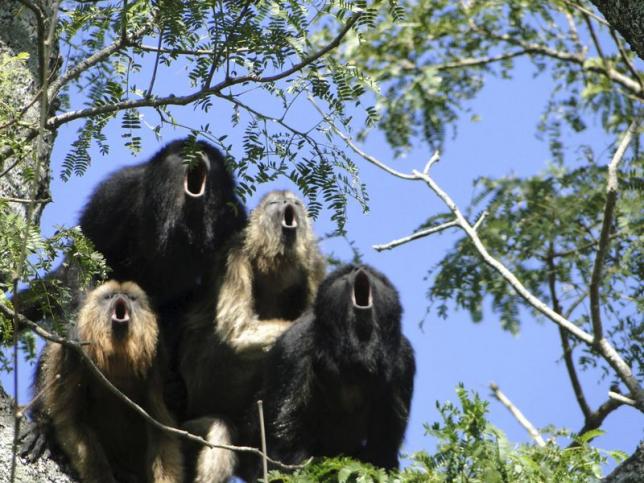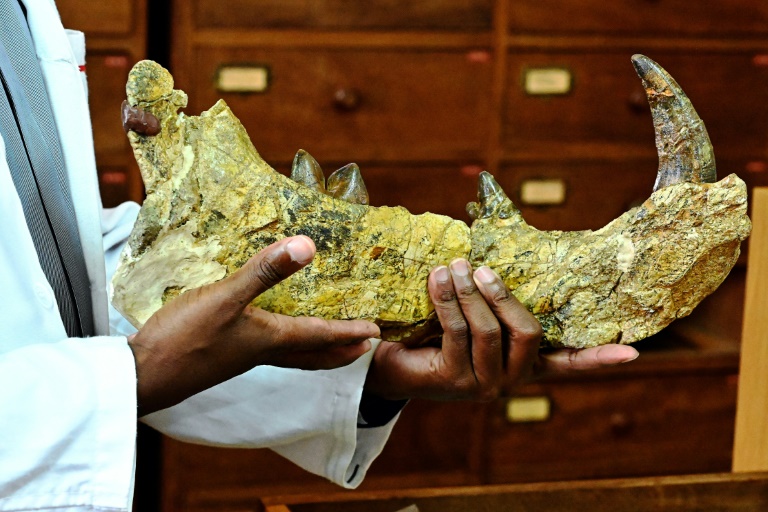
The howler monkeys whose guttural calls reverberate through Central and South American rainforests possess a secret that the males of the species may prefer to be left unrevealed.
Howler monkeys make among the loudest, deepest sounds of any land animal, and males use their roars to attract the ladies for mating and intimidate other males.
But scientists on Thursday said they have discovered a curious paradox: males that make the lowest-frequency calls considered the most alluring to potential mates are endowed with the lowest reproductive potential.
The research focused on a cup-shaped bone, the hyoid, located above the larynx that creates a resonating chamber to amplify vocalizations.
Among nine howler monkey species studied, those with the biggest hyoid produced the deepest and lowest-frequency calls, but also had the littlest testes for sperm production.
"We discovered that the largest hyoid bones were found in howler monkey species with the smallest testes volume, and vice versa," University of Utah anthropologist Leslie Knapp said.
University of Cambridge biological anthropologist Jacob Dunn called it an "evolutionary trade-off" for male howler monkeys between vocal tract and testes size.
"This means that different species of howler monkeys either invest in one of these traits or the other, but not both," Dunn said. "I think the main message is that when it comes to reproduction, you can't have everything."
Howler monkeys, found from southern Mexico to Argentina, spend most of their time in tall trees with the help of their gripping, prehensile tails, munching leaves, fruits and flowers. Their howls can be heard 3 miles (5 km) away.
"Howls sound a bit like the roar of a lion, but many howlers produce even deeper and more complex sound," Knapp said. "Deeper howls suggest large body size, so howlers with deep howls give the impression that they are bigger than they really are. This is an advantage for males that are competing to mate with females."
Males in species that live in "harem" groups of one male and multiple females have a very large vocal tract but small testes. Males in species with multiple males and females per group have smaller vocal tracts but larger testes.
"This is probably because the females in these species will mate with several males, and so the males have evolved to produce more sperm to increase their chances of fertilizing an egg," Dunn said.
The research appears in the journal Current Biology.




